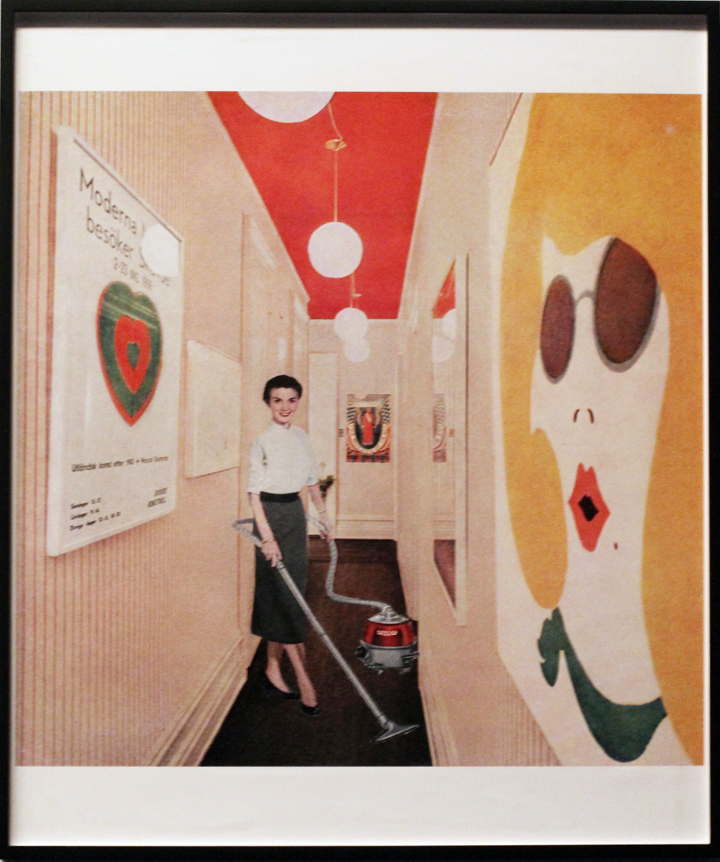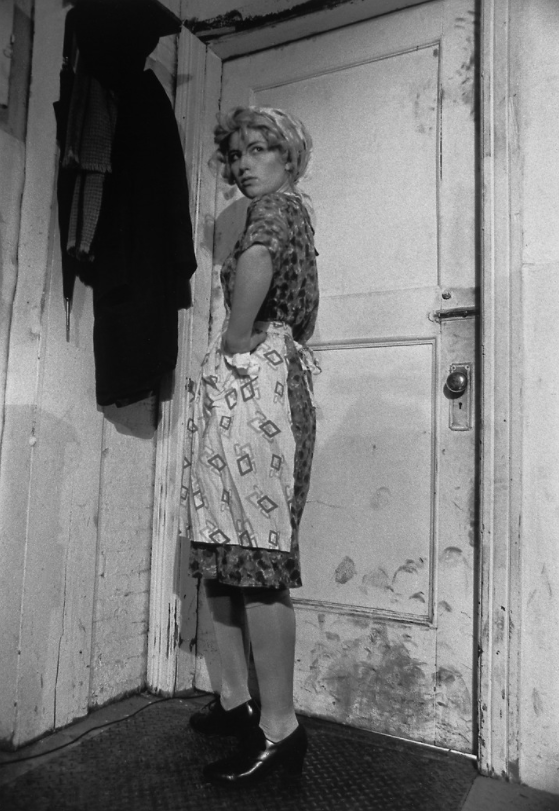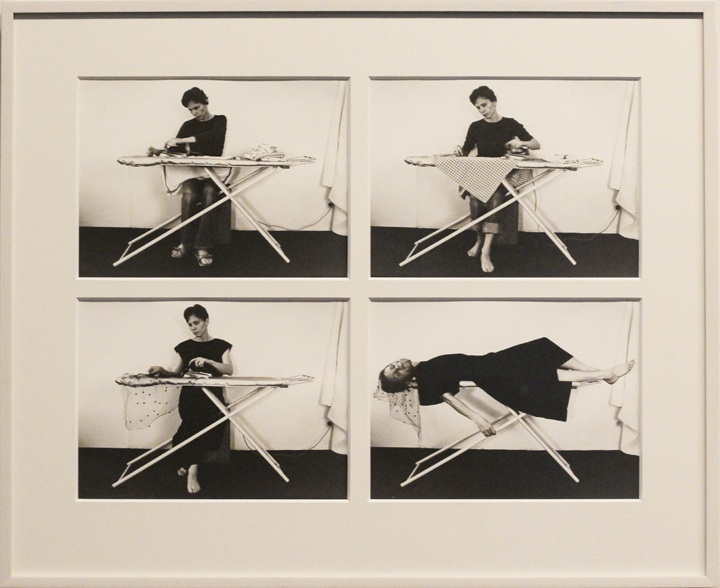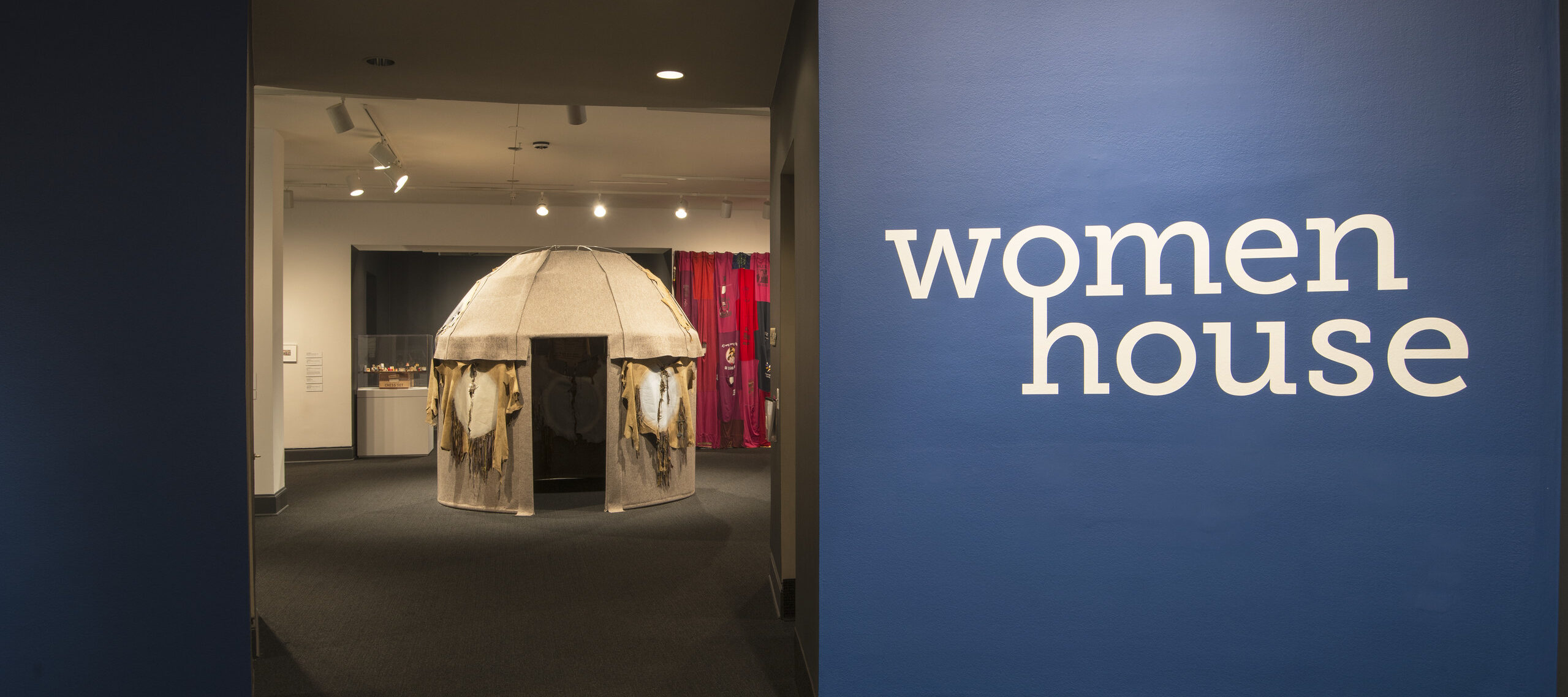Questions about a woman’s “place” resonate in our culture, and conventional ideas about the house as a feminine space persist. Global artists in Women House recast conventional ideas about the home through provocative photographs, videos, sculptures, and room-like installations. Martha Rosler, Cindy Sherman, and Karin Mack use cliché and irony in their photographs to deconstruct stereotypes of women as submissive housewives.
Martha Rosler, Woman with Vacuum, or Vacuuming Pop Art, 1965–74
Martha Rosler (b. 1943, Brooklyn, New York) constructed Woman with Vacuum, or Vacuuming Pop Art with images clipped from magazine advertisements which engaged in “shameless stereotyping.” Rosler says, “I felt that the emergent pop painters also repeated those tropes but always denied any depth of social critique beyond an ironic wink.”
The smiling woman in the photomontage appears content. Although she is vacuuming, her clothes are crisp and her hair is styled. She is both a hardworking housewife who is happy to serve and an object for the male gaze. While the smile plastered on the woman’s face coupled with the bright colors of the art on the walls radiate cheerfulness, the narrow hallway is suffocating and restrictive—almost cage-like. Whether or not she is resigned to her role as housewife, the woman cannot escape.

Cindy Sherman, Untitled Film Still #35, 1979
Drawing from pop-culture clichés, Cindy Sherman (b. 1954, Glen Ridge, New Jersey) explores notions of femininity and the construction of identity. In a series of photographs created from 1977 to 1980, Sherman evokes familiar images of women in stereotypical film roles, ranging from seductive bombshell, to subservient housewife, and ingénue.
The subject of her own photographs, Sherman uses wigs, costumes, and makeup to embody each character. Untitled Film Still #35 depicts a young woman wearing a dress, apron, and headscarf. She seems frustrated and dissatisfied with her limited role as a housewife, representing a stark contrast to the figure in Rosler’s work. Sherman says, “I definitely felt that the characters were questioning something—perhaps being forced into a certain role.”

Karin Mack, Bügeltraum (Iron Dream), 1975
Woman and ironing board become one in Bügeltraum (Iron Dream), a series of four black-and-white photographs by Karin Mack (b. 1940, Vienna, Austria). The artist, dressed in a black shirt and jeans, irons a gingham cloth. By the third image, Mack trades her casual outfit for a black dress and the cloth becomes a sheer black veil. In the final photograph, Mack lays on top of the ironing board with the veil draped over her head, symbolizing the death of the housewife.
Her body becomes part of the ironing board, highlighting her identity as an object rather than a person with agency. Mack’s subversive work underscores the struggles of many women artists in the 1970s who found their role as homemaker monotonous and often an obstacle to being taken seriously in a male-dominated art world.

© Karin Mack / The SAMMLUNG VERBUND Collection, Vienna
Visit the museum and explore Women House, on view through May 28, 2018.
